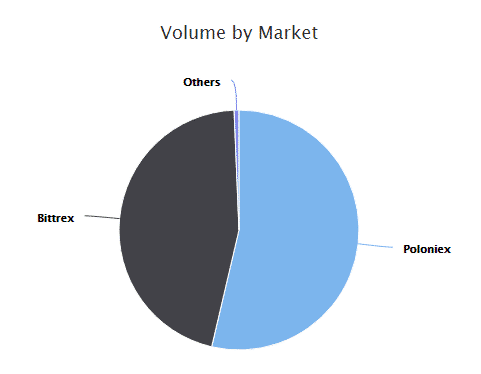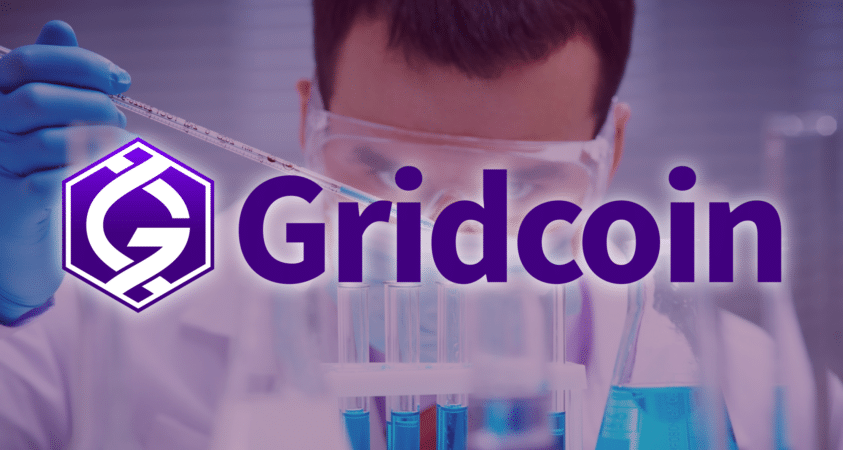The Gridcoin platform creates a supercomputer-like environment by combining every user’s computational power on the network. This computational power is then used by researchers to further their studies. Current projects span the spectrum of science from mapping protein development in humans, to mapping the entire Milky Way galaxy.
The platform automatically rewards users in GRC tokens for volunteering their CPU power. Gridcoin uses a combination of new and innovative features to produce a research network that is far more cost-efficient. Let’s take a moment to see how this coin originated.
Gridcoin Enters the Market
Gridcoin entered the market on October 16, 2013, via an open-source GitHub post. The coin’s anonymous founder, Rob Halförd, has maintained a presence in the project via their Telegram channel. The lead developer on the project is Marco Nilsson. He has an extensive background in automotive and industrial software.
There are a number of public contributors to this project; which has been open-source since its release. Recently, concerns have been voiced in regards to lifting the minimum programmer requirements for volunteers. Some contributors have complained about the competency of others involved in the project.
System Updates
Gridcoin has undergone significant upgrades since it first entered the market. These updates include a hard fork that created Gridcoin Classic and the current Gridcoin. These upgrades allowed for the institution of the Proof-of-Research system which allows users to donate computational power to the BOINC network at a more efficient level than before. The PoR system ensures that all of the PC’s power goes directly towards research instead of mining.
Market Activity
Since its entry 5-years ago, Gridcoin has taken a back seat too many of the newer arrivals in the altcoin market. The number of Altcoins in the market exploded in mid-2017, with thousands of new cryptocurrencies entering the space in quick succession. All of this hype has made it easy to lose track of older crypto projects such as Gridcoin.
Gridcoin’s Approach
Gridcoin has a unique strategy when compared to most cryptocurrencies. Which can be focused primarily on helping you speed up your transaction times or launching your ICO. Gridcoin users are rewarded for lending their computer power to the Gridcoin network in conjunction with the Berkeley Open Infrastructure for Network Computing (BOINC) platform.
[thrive_leads id=’5219′]
Superblocks
Gridcoin utilizes a superblock protocol. Gridcoin holds the data for transactions in regular blocks but keeps the information pertaining to an individual’s computation contributions on a second layer. Superblocks are helpful for peer-review and scientific journal rating purposes. The system is designed in this manner to allow for future development, including the addition and integration of other shared computational networks.
Proof-of-Stake
Gridcoin has been billed as an environmentally friendly cryptocurrency since its early days. The developers decided to go with the new alternative at the time – Proof-of-Stake (PoS) after seeing the huge electrical demands required by the Bitcoin blockchain. PoS coins do not require mining in the traditional sense, instead, users are rewarded for holding or “staking” their coins in their wallet.
Many consider PoS coins to be the future of the cryptospace. BTC mining is already responsible for consuming more electricity than the entire country of New Zealand last year. PoS coins do not require the use of any special mining hardware. Therefore, they are more in line with the decentralized nature of the cryptomarket. In addition, they do not require huge amounts of energy consumption to be mined. This makes PoS coins such as Gridcoin a more eco-friendly alternative.
BOINC
BOINC is a high-performance computer sharing platform that was established on April 10, 2002. It wasn’t until blockchain technology emerged that this system gained the capabilities to allow for open membership and incentivized volunteering. The BOINC system is utilized by researchers from around the globe who are seeking a more cost-effective means to handle enormous scientific calculations. BOINC has been used extensively in the fields of mathematics, climatology, molecular biology, astrophysics, environmental science, and more.
Proof-of Research / Proof-of-BOINC
The term Proof-of-Research was coined by Gridcoin’s developer Rod Halford in February 2014 during a cryptocurrency talk post. Proof-of-Research works much different than PoW or PoS systems. The users are rewarded for signing up for projects currently utilizing the Gridcoin platform. Users must first register and download the BOINC software to begin earning Gridcoin for their contributions. Once registered, you will need to view the BOINC whitelist to choose the project that you want to assist in.
The PoR system combines a hash code from the previous block with that of a hash sent from the BOINC platform which confirms your participation levels. Users must provide both of these items before they are awarded their GRC tokens. By providing a hybrid mining process, Gridcoin is able to maintain an environmental footprint that is much smaller than PoW coins.
Gridcoin Research
The Gridcoin network is providing researchers with the ability to tackle age-old problems with the precision of blockchain technology. It is unique in the market in this approach. There has already been a considerable amount of research handled by Gridcoin and BOINC.
Problems with Gridcoin
Gridcoin is far from perfect like all cryptos. A recent Steemit poll revealed areas of concern within the platform that must be addressed before Gridcoin can see further expansion. The issues revealed in this report focus primarily on wallet malfunctions. Users have complained about frequent wallet crashes, delays in rewards, and a complicated setup procedure that can deter new users.
A considerable amount of people also expressed concerns regarding the lack of direction in the Gridcoin community, including the uneven matter in which projects are being focused. Competition in the sharing storage sector is growing with platforms such as Storj and Sia already holding considerable market share.
GRC Token
The GRC token is used to pay participants for their contributions. GRC is up 7.24% at the time of writing with $48,724 in 24-hour trading volume. GRC is showing a total market cap of $14,587,666 with a market value of $0.03. This is down from the all-time high of $0.18 on January 7th, 2017.
Multiple exchanges offer GRC tokens including Bittrex and Poloniex. These exchanges are responsible for over 95% of all the GRC trading volume according to Coingecko.

GRC Wallets
GRC users have a multitude of wallet options to consider. You will need the GRC core wallet if you want to PoS mine this crypto. Coinomi offers a third-party mobile wallet option as well. You can also store your GRC on exchanges when necessary, although this last option is not recommended for long periods of time.
Blockchain at its Finest
The fact is, there aren’t many people discussing their Gridcoin winnings. For some, the research aspect of this coin may be enough for you to consider supporting this altcoin moving forward. Blockchain technology is expanding our horizons. Platforms such as Gridcoin are using this technology to provide scientists and researchers a way to keep their experimentation costs down.





